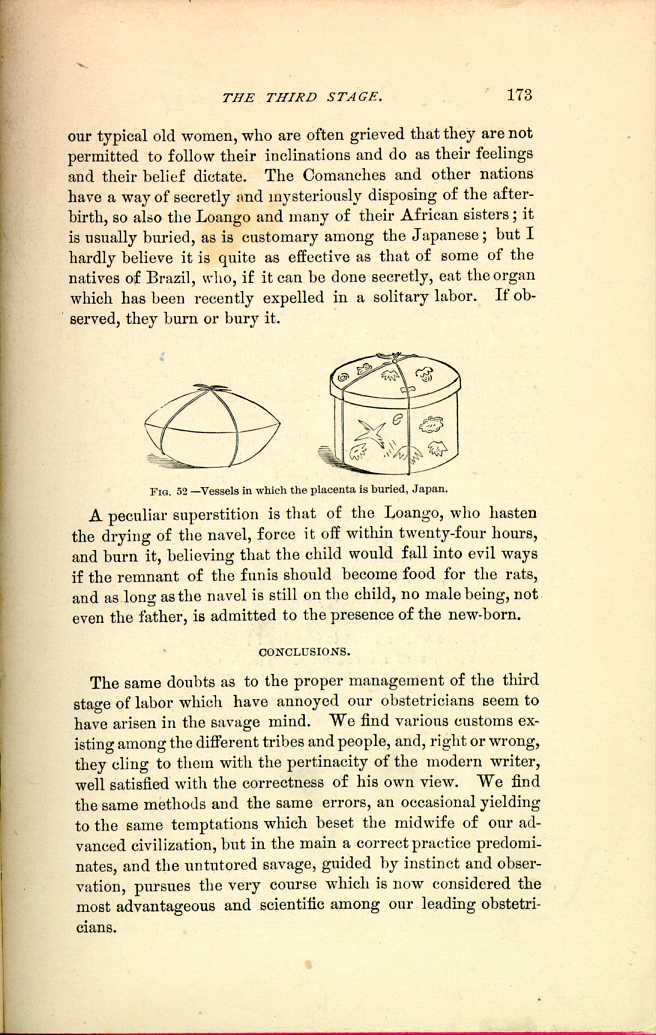| CHAPTER III. THE THIRD STAGE OF
LABOR. Labor Among Primitive Peoples | ||
PECULIAR SUPERSTITIONS AND CUSTOMS.
The Sandwich Islanders, like many of our Indians, accustomed to the speedy expulsion of the afterbirth, are in great alarm if this does not occur, and think that a rapid delivery is all important; in case their simple means do not succeed, they do not seem to worry much about the patient; the Menemonee and others leaving her often in the same position for days, whilst the Crows and Creeks and allied tribes, and the Mexicans also, cease to bother about her, leaving the placenta until it sloughs away, or the patient succumbs to the consequent pyemia. The African negroes, either on account of ignorance or superstition, rarely make any attempt at artificial removal of the retained afterbirth. Among all these savage people, a certain belief seems to exist that, if nature, aided by their simple and rational means of external expression, does not speedily expel the placenta, it must not be interfered with and they turn away from the unfortunate sufferer; should the cord tear in their efforts at traction, which fortunately are, as a rule, gentle, they give up the patient; hence we see with what care the Kootewai squaw seizes the placental end of the cord as soon as it is cut in order that it may not escape back into the womb; it is possible that some such superstition, rather than obstetric knowledge, should cause the Indian midwife to make but gentle traction on the cord, and induce her to rely mainly upon external pressure, either by belt or hand, or even such as may be caused by the efforts at vomiting; possibly it may have been the teaching of some shrewd law-giver, but there is certainly some fear which prevents the women of savage tribes from making that dangerous traction upon the navel string which is so common among their white sisters; it is truly unfortunate that no such superstitious fear governs the civilized midwife.
A peculiar trait is also developed among many of these people which we are familiar with in the superstitions of some of

FIG. 53—Vessels in which the placenta is buried, Japan.
[Description: Two box-like containers, one shaped like a clamshell, the other cylindrical, with a round lid. Both appear to be bound with twine. Black and white illustration.]A peculiar superstition is that of the Loango, who hasten the drying of the navel, force it off within twenty-four hours, and burn it, believing that the child would fall into evil ways if the remnant of the funis should become food for the rats, and as long as the navel is still on the child, no male being, not even the father, is admitted to the presence of the new-born.
| CHAPTER III. THE THIRD STAGE OF
LABOR. Labor Among Primitive Peoples | ||